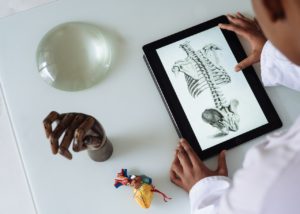Title: Efficiency and Comfort: Designing Healthcare Fitouts with Patients in Mind
A well-designed fit-out is crucial in providing efficient services and ensuring patient comfort in healthcare facilities. Medical fit-outs involve creating functional, organized, and tailored spaces to meet the specific needs of healthcare providers and patients. This article will explore the importance of designing healthcare fit-outs with patients in mind and how they enhance efficiency and comfort.
- Patient-Centric Design Approach:
A patient-centric design approach is at the heart of successful healthcare fit-outs. It involves understanding the unique requirements of patients and creating spaces that prioritize their comfort, convenience, and overall experience. Every aspect of the fit out should be carefully considered to promote a positive patient journey, from the reception area to examination rooms and patient recovery areas.
- Efficient Workflow and Layout:
Efficiency is a critical consideration in healthcare fit-outs. Well-designed layouts and workflows ensure smooth patient flow, minimize waiting times, and optimize staff productivity. From strategically locating reception desks to designing clear pathways and organizing medical equipment and supplies, a thoughtful fitout promotes streamlined operations and enhances patient experience.
- Comfortable Waiting Areas:
Designing a comfortable and welcoming space can help alleviate stress and anxiety. Incorporate comfortable seating, ample natural light, soothing colours, and thoughtful amenities such as reading materials or access to Wi-Fi. Creating separate zones for patient groups, such as children or the elderly, can enhance comfort and privacy.
- Functional Examination Rooms:
Examination rooms are critical spaces where patients interact with healthcare providers. Optimal functionality should be the focus when designing these rooms. Adequate space for medical equipment, ergonomic furniture, proper lighting, and accessible storage solutions are essential. Integrating technology, such as electronic health record systems, can streamline data management and enhance the efficiency of medical consultations.
 Privacy and Confidentiality:
Privacy and Confidentiality:
Respecting patient privacy and confidentiality is of utmost importance in healthcare fit-outs. Design considerations should include soundproofing measures, visual barriers, and private consultation areas. Ensuring patient confidentiality protects sensitive information and contributes to a sense of trust and security within the healthcare environment.
- Infection Control and Hygiene:
Maintaining a clean and hygienic environment is crucial in healthcare settings. Design features that facilitate infection control and proper hygiene should be incorporated into the fit out. This may include appropriate ventilation systems, easy-to-clean surfaces, and designated hand hygiene stations. Ensuring compliance with healthcare regulations and guidelines is essential for patient safety.
- Integration of Technology:
In today’s digital era, incorporating technology into healthcare fit-outs can significantly improve efficiency and patient care. Consider integrating electronic medical record systems, telehealth capabilities, and intelligent devices that enhance communication and streamline processes. For example, digital signage can provide real-time updates and directions, reducing confusion and improving patient navigation within the facility. Embracing technology enhances the patient experience and enables healthcare providers to deliver more efficient and accurate care.
- Flexibility and Adaptability:
Healthcare environments are ever-evolving, and it’s essential to design fit-outs that can adapt to changing needs. Incorporate modular furniture, flexible room configurations, and adjustable lighting systems that accommodate future modifications or advancements. This flexibility allows healthcare facilities to respond to new technologies, changing regulations, and evolving patient requirements without significantly disrupting the existing infrastructure.
- Comfortable Staff Areas:
A well-designed healthcare fitout should not only focus on patient comfort but also prioritize the well-being of the staff. Create inviting break areas, ergonomic workstations, and functional storage solutions for medical supplies. Providing a comfortable and supportive environment for healthcare professionals can enhance their job satisfaction, productivity, and overall morale, ultimately benefiting the patient experience.
- Sustainable and Green Practices:
Incorporating sustainable and environmentally friendly practices into healthcare fit-outs is both responsible and cost-effective. Utilize energy-efficient lighting, optimize natural daylighting, and choose eco-friendly materials and furnishings. Implementing recycling programs and water-saving measures further contributes to a greener healthcare facility. Sustainable design reduces the environmental impact and creates a healthier and more sustainable environment for patients, staff, and the community.
Designing healthcare fit-outs with a patient-centric approach, efficient workflow and layout, comfortable waiting areas, functional examination rooms, privacy and confidentiality, technology integration, flexibility and adaptability, comfortable staff areas, and sustainable practices all contribute to creating a healthcare environment that enhances efficiency and patient comfort. By carefully considering these aspects and incorporating them into the fit out design, healthcare facilities can provide high-quality care while prioritizing the well-being and satisfaction of patients and staff. A well-designed healthcare fit out goes beyond aesthetics and becomes a foundation for excellence in healthcare delivery.